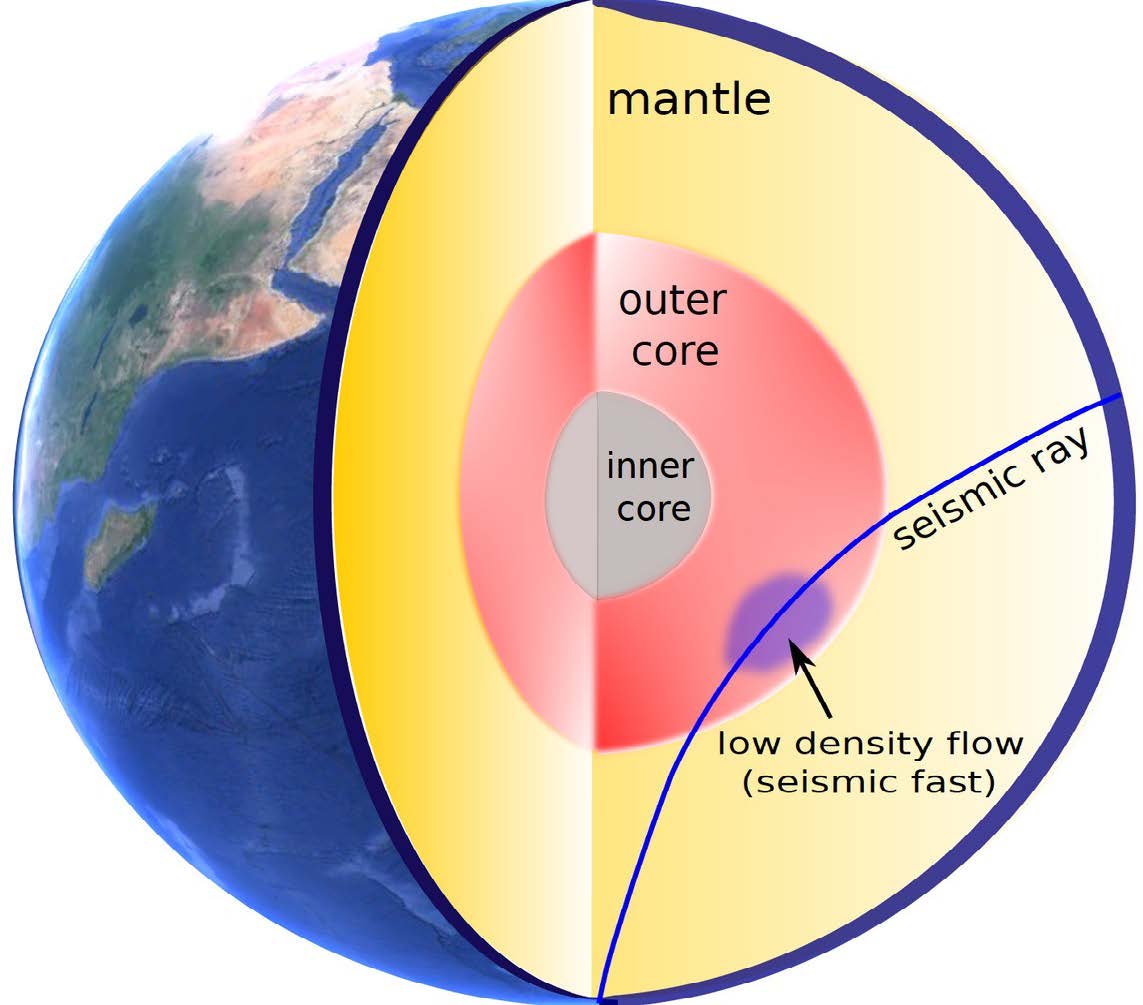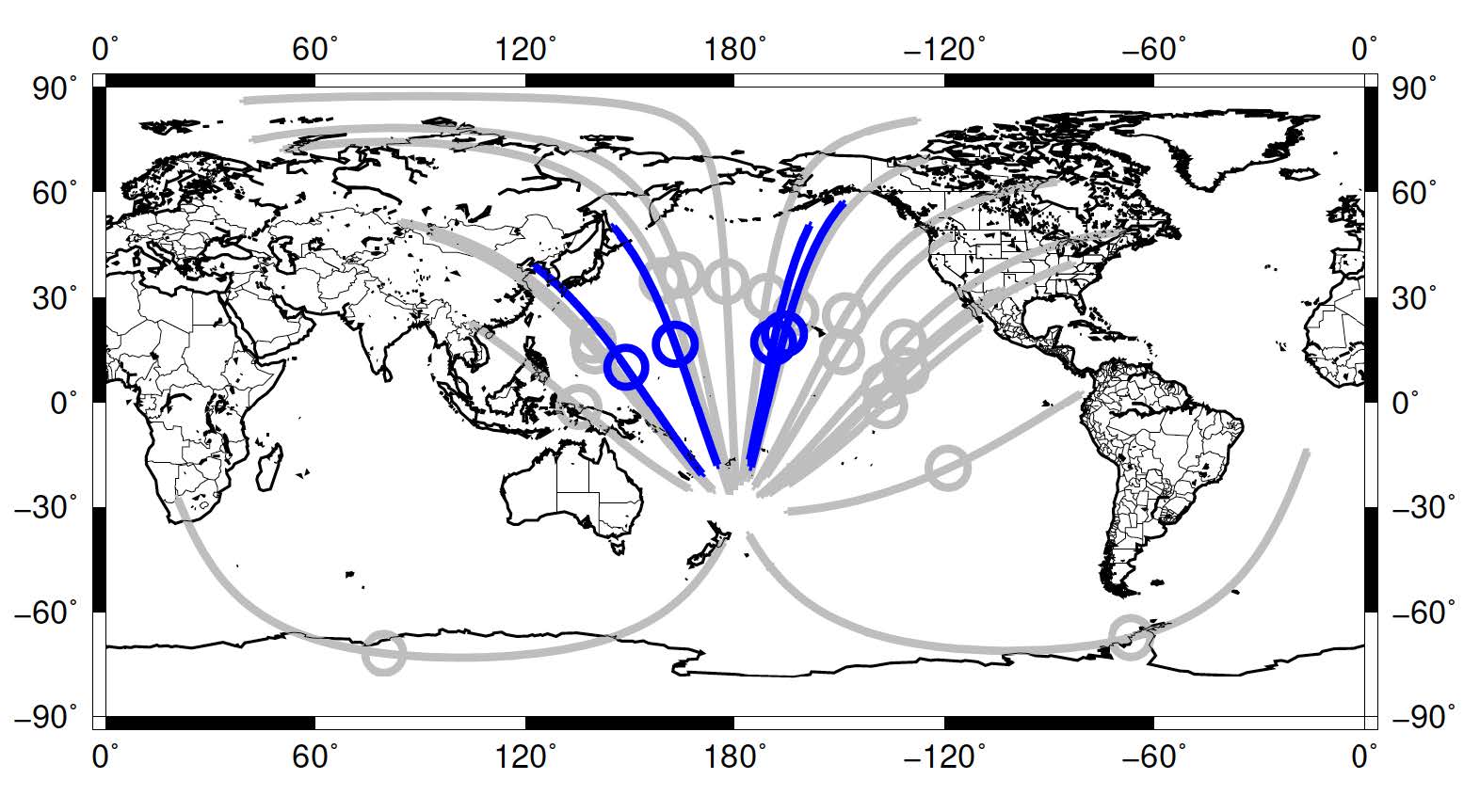|
3056A Derring Hall (Mail Code 0420)
Department of Geosciences, Virginia Tech, Blacksburg, VA 24061
Transient variation in seismic wave speed points to fast fluid movement in the Earth's outer core
(Communications Earth & Environment, 2022)
Abstract
The solid inner core grows through crystallization of the liquid metallic outer core. This process releases latent heat as well as light elements, providing thermal and chemical buoyancy forces to drive the Earth’s geodynamo. Here we investigate temporal changes in the liquid outer core by measuring travel times of core-penetrating SKS waves produced by pairs of large earthquakes at close hypocenters. While the majority of the measurements do not require a change in the outer core, we observe SKS waves that propagate through the upper half of the outer core in the low latitude Pacific travel about one second faster at the time when the second earthquake occurred, about 20 years after the first earthquake. This observation can be explained by 2-3% of density deficit, possibly associated with high-concentration light elements in localized transient flows in the outer core, with a flow speed in the order of 40 km/year.Plain Language Summary
Scientists know that the Earth’s magnetic field is powered by the movement of the liquid iron in the outer core, which creates powerful electric currents that generate the Earth's magnetic field. The strength and direction of the Earth's magnetic field have been changing rapidly, indicating that the swirling flow of iron in the outer core is changing. However, this change has never been directly observed.In this research, we present the first direct observation of fast fluid movement in the outer core. Some seismic waves (rays) produced by large earthquakes can penetrate through the Earth’s core to the other side of the planet. We measure the speed of those seismic waves that move through the same region in the outer core, using earthquake data recorded in the 1990s and in the 2010s. In several regions, we found an increase in seismic wave speed in the outer core in the 2010s. This indicates that low density iron flows have moved into those regions, with an estimated flow speed in the order of 40 kilometer per year. This research opens the possibility of monitoring temporal flow changes in the outer core using seismic data.

Figure 1: The blue path illustrates a core-penetrating seismic wave moving through a region in the outer core
where the seismic speed has increased because a low-density flow has moved into the region.

Figure 2: Blue lines are seismic rays in the outer core where core-penetrating seismic waves moved
through that region faster in 2018 than in 1997.